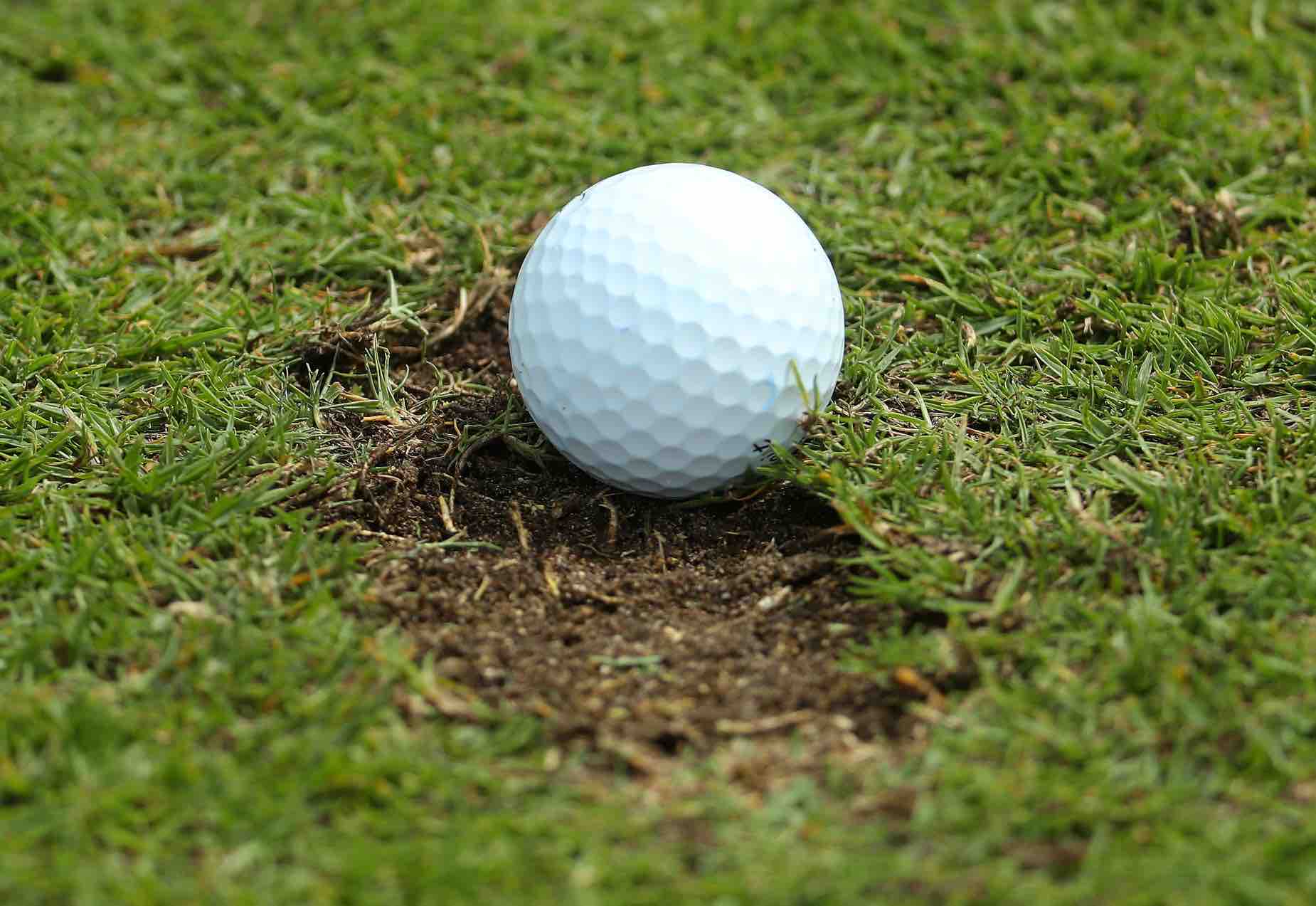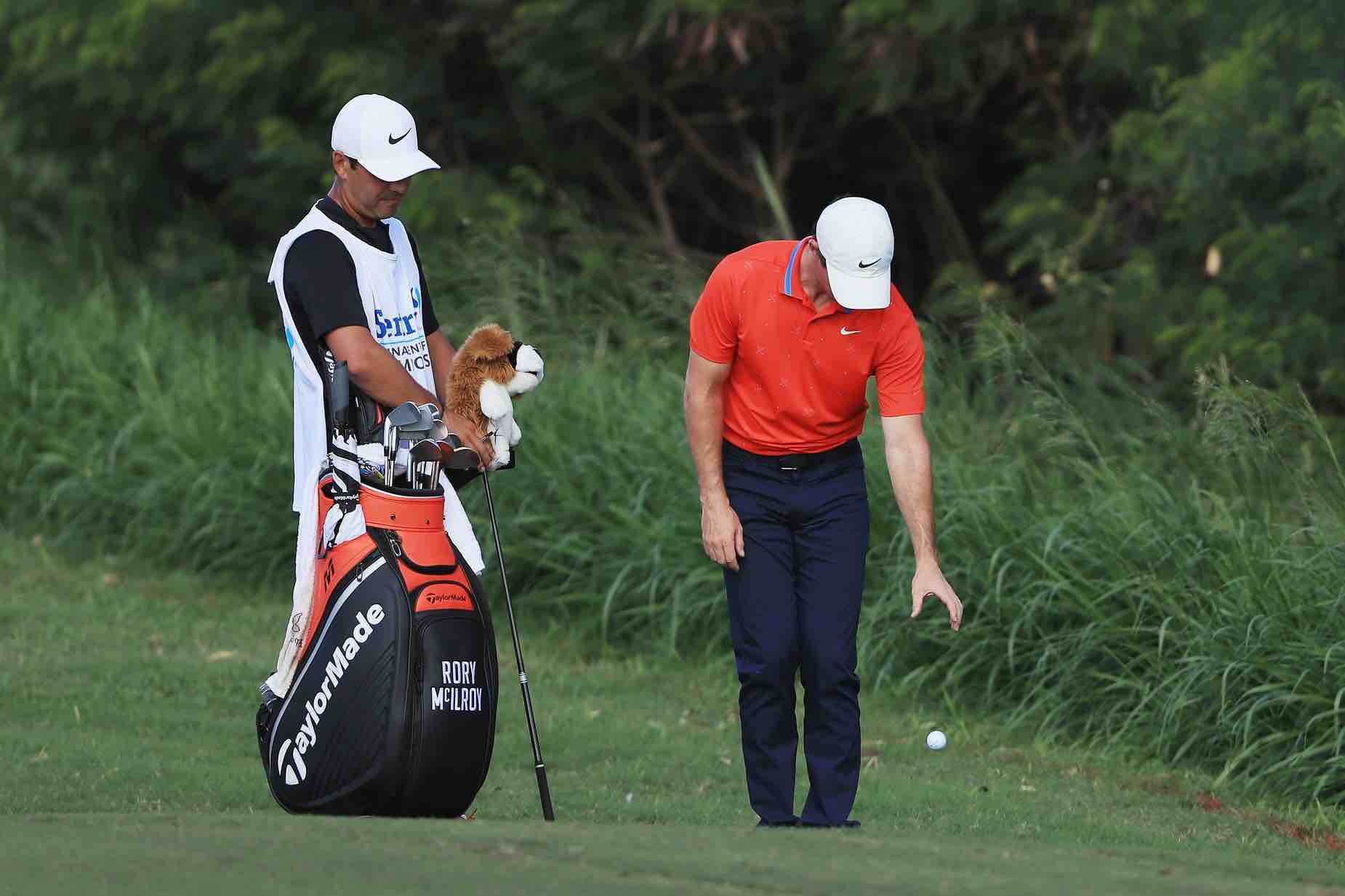Golf is not so much our profession as it is our passion at Golf Digest, and often that passion translates to philosophical, analytical, ideological and, occasionally, idiotic workplace discussions about the game. During this time of pause in our sport (and in the world at large), we decided to take these office conversations online in hopes of providing a welcome distraction.
In our latest installment of the “Great Golf Debates” writers Christopher Powers and Joel Beall tackle the pressing question: What golf rules need to go?
Beall: The R&A and USGA have relaxed some of the Rules of Golf during the pandemic. This comes a year after the game’s bylaws underwent a major revision. But there remain a handful of rules that continue to confound, confuse and anger, so the good folks in St Andrews have come seeking our help. Chris, what golf rules are you changing, implementing or eliminating?
Powers: Hooo boy, how much time ya got?
The first thing I’d look at is out-of-bounds, and I’d start by eradicating it entirely. I realise the OB rule was relaxed so that courses could adopt a local rule and wouldn’t make players do stroke and distance, but everyday golfers were playing that way anyway. Why? Because it’s dumb and a complete pace-of-play killer to make players go back to the tee, or to hit a provisional, where, best case scenario, they will be fighting for bogey.
It’s too great of a penalty, especially for a ball that might just be a few steps OB. In my opinion, unless your ball is on someone else’s property, fire away.
Beall: There are already so many arbitrary lines in society. White chalk on a golf course shouldn’t be one of them.
For me, the first change is the obvious: relief from a fairway divot hole. When they rolled out its revisions last year, the R&A and USGA knew the divot question was coming, so much that they had a prepared statement for it:
“One of the primary objectives for the overall initiative is to make the rules easier to understand and apply, but to also make sure we maintained the traditions and principles behind the game,” said Thomas Pagel, USGA senior director of rules & amateur status. “And the principles are to play the ball as it lies and the course as you find it. So to write a rule that allows a player to sort of deviate from that, was not something we were wanting to do.”
The problem is, golf already deviates from that principle, and often. A tour player can go off the grid but if their ball is behind a grandstand, congrats, relief. An errant shot finds the cartpath? Boom, free drop. Same if you shank it into a flower bed or feel there’s casual water beneath your feet.

To penalise a player for ending up in a divot is not only the antithesis of the sport’s “gentleman’s game” ethos, it’s a failure to apply an exception made for less “proper” shots. It’s a rule Tiger Woods had advocated to change, plus the Bible clearly gives us guidance on moving the ball out of divots when it says, “A great crevasse has been fixed between us and you… warn them so that they don’t come to this place of agony.” To argue against this is spitting in the face of justice, the GOAT and God.
Powers: Excellent point about the grandstand, which, at least on Golf Twitter, is called “grandstanding”. So it’s so much of a thing that it’s been turned into a verb. That goes back to an argument I’ve secretly had for a few years now, that the 2018 US Open at Shinnecock Hills would have either A) gone into a playoff or B) been won by Tommy Fleetwood had the stands not stopped Brooks Koepka’s ball on the 18th hole. He hit a wildly bad hook on the most pressure-packed shot of the day and how was he punished? By bouncing his ball off the grandstand and leaving him with a chip from the short grass. No grandstands there and he’s likely hacking out from higher grass, where anything could happen. This is a very specific situation, and we’re deviating from the point a bit, but it was something that had to be said.
Beall: Calling out Brooks during a pandemic. I’ll speak well of you at the funeral.
Powers: As for your ball-in-a-divot point, couldn’t agree more. That said, have you ever played a shot from a divot and pulled it off? It’s pretty exhilarating. It’s taking something hard (hitting a golf shot) and making it extremely harder.
Beall: It is exhilarating, especially when it comes against someone in a match who won’t allow you to kick it out. A greater “In your FACE!” there is not. (In a related note, that reaction, and who it was directed at, may partially explain my stalled career.)
However, OB and divot relief are the, uh, gimmes on this subject. Give me a rule change that isn’t as self-evident.
Powers: How about both the new drop rule and the caddie-lining-up-their-player rules, which were both implemented in 2019. The Rules of Golf were supposed to be simplified, and all the R&A and USGA did with these two is make them more complicated. Within two months, there were multiple infractions of both these rules. Had those rules not been tweaked, there would have been no issues. Does that sound “simplified” to you?
Beall: By the tone of your remarks and use of quotation marks, I’m going to say no.

Powers: Simple solution: instead of having an exact height to drop from, like the knee or shoulder, just make it anywhere above the knee. You want to drop it shoulder height? Go for it! From the waist? Go for it! But let’s not get the microscope out to see if a player is dropping in direct line with their kneecap.
For the caddie-lining-up-their-player rule, I can see both sides. It’s a distinct advantage, especially for world-class players, to be lined up perfectly by their caddie. But where it gets silly is when Haotong Li is lining up a two-footer and he gets penalised and loses six figures on top of it because he simply didn’t step away after his caddie just happened to be behind him.
Beall: Dropping from knee length is up there with pitchers trying to bunt and centres shooting free throws on the “athletes looking very unathletic” list.
You danced around it above, so let’s drive it home: NO MORE GRANDSTAND RELIEF. They are not going away, given how much money can be made on box suites. So if pros are going to benefit from shots ricocheting towards the green, there needs to be an equally weighted punishment. And that punishment is, “Uh oh, your ball is behind this hospitality tent? Well, open up that 60 degree wedge, pal.”
My second issue comes up a few times a year, but why do pros have to sign their own scorecard? Can you imagine the chaos if NBA basketballers had to keep track of their own score? (Thinking) Actually, the last two minutes would be vastly more entertaining and fights would break out at least twice a game. Nevertheless, send this rule back to the Stone Age.
Final question: what rule would you add?
Powers: Twice a game? Judging by how volatile pickup games would get in college over what the score actually was, twice seems extremely low. Games would never end, because they’d all be under protest and/or guys would quit, take their ball and go home. Are we still talking about golf?
Anyway, the rule I’d add? Bring back the stymie on the putting greens. Fans would love it. Imagine guys chipping over each other’s golf balls on the greens in today’s game? Absolute madness. I say try it in the WGC–Dell Match Play to start, then bring it to the Ryder Cup and watch a literal fist fight break out on the green.
Beall: The stymie is so genius I forgot my proposal. My only caveat: stuff the Match Play; reintroduce it at the Ryder Cup. Then sit back and watch the golf world burn.




